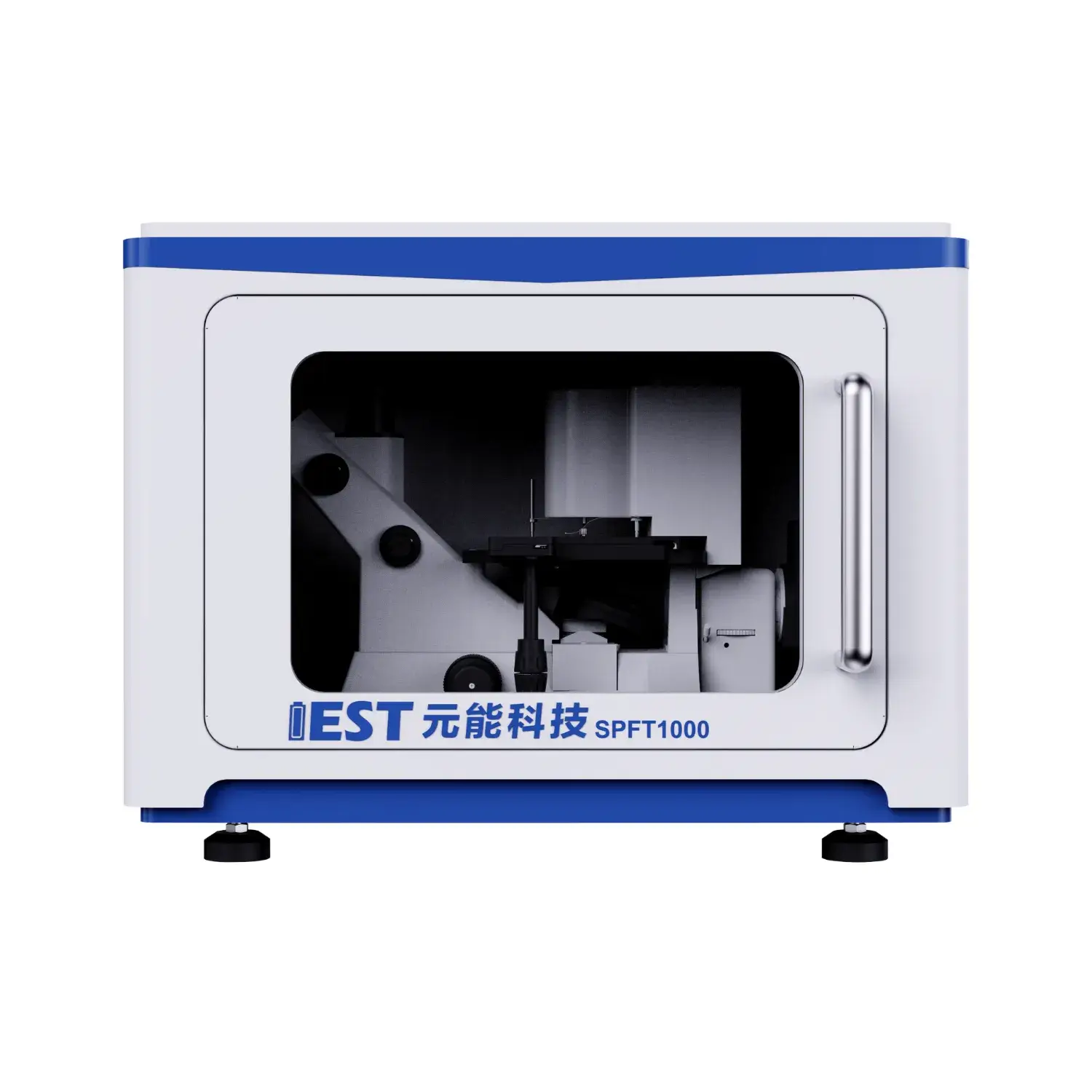Rollback capable firmware slurry process scale up consultancy

Electrochemical impedance methods provide deep insights into battery performance of lithium-ion batteries, across different temperature regimes. Leveraging analyzing the impedance response of the battery across frequencies, valuable insights can be extracted regarding the internal resistance, charge transfer kinetics, and overall state of health of the lithium-ion battery system. For example, EIS testing can help to quantify the impact caused by temperature fluctuations on key specs such as electrode polarization resistance, ionic conductivity, and double layer capacitance.
- Furthermore, EIS data can be used to pinpoint potential failure mechanisms connected to thermal stress, enabling the development of strategies for optimizing battery architecture and improving their overall longevity.
- These information is crucial for ensuring the safe and stable operation during lithium-ion batteries in a wide range spanning applications, including electric vehicles, portable electronics, and energy storage systems.
Accelerated Life Testing of Lithium Batteries: A Comprehensive Analysis
Lithium battery packs drive diverse applications, demanding rigorous testing to ensure their reliability and longevity. Accelerated life tests perform as a fundamental process for simulating the consequences of prolonged use and diverse operating conditions on battery performance. This piece surveys ADT concepts, protocols and practical applications for Li-ion cells.
Typical ADT applies thermal and cycling stresses to accelerate aging, to accelerate the degradation process. This helps measure capacity loss and life reduction due to stress.
Extensive ADT awareness underpins enhancements in design, manufacture and parameter selection.
EIS Methods for Battery Characterization
EIS characterization applies AC perturbation to probe internal resistances and electrochemical kinetics in Li-ion cells. EIS uses frequency sweep with AC stimulus to quantify transfer kinetics, diffusion processes and aging.
Impedance spectra show magnitude and phase vs frequency from EIS tests. Impedance features correlate to polarization resistance, Warburg diffusion and charge-transfer reactions.
Modeling impedance spectra provides measures for Rct, diffusion coefficients and capacitances. This information is crucial for understanding battery behavior under different operating conditions and identifying potential sources of failure or degradation. Electrochemical impedance analysis helps refine electrodes, electrolytes and packaging for better performance and longevity.
Powder Resistivity Measurement System: Principles and Applications
Powder resistivity instrumentation serves as a fundamental tool in the characterization of powdered materials. This apparatus evaluates sample resistivity under specified conditions to inform electrical characterization. Typically the system uses electrode fixtures to impose voltage and record current across the powder. Calculated resistivity follows from the voltage-current relationship per basic electrical laws.
Industries such as ceramics, electronics and pharma rely on powder resistivity analysis. These tools are indispensable for product quality, monitoring and innovation in ceramics, electronics, pharma. Ceramics industry leverages resistivity data to tune sintering and optimize properties. Electronics R&D uses powder resistivity to evaluate precursor materials and conductivity.

Dynamic Resistivity Monitoring to Control Powder Quality
Continuous resistivity feedback supplies actionable control over powder properties during fabrication. Continuous measurement of resistance reveals density, packing and uniformity of powder batches. Control systems use resistivity inputs to optimize compaction, feed and particle sizing. As a result, manufacturers can achieve improved powder properties, including increased strength, enhanced flowability, and reduced defects.
Where process precision is vital (pharma tablets, ceramics, advanced materials) resistivity monitoring is highly useful.
Next-Generation Powder Resistivity Instruments for Labs
A high-precision resistivity analyzer is essential for materials R&D and battery research. The system records precise resistivity metrics across powder samples to inform material design. Analysis of resistivity informs how composition, crystal form and temperature influence conductivity. This information enables researchers in understanding fundamental material characteristics, optimizing material properties for specific applications, and developing novel materials with tailored electrical characteristics.
- Resistivity analyzers serve multiple research domains: semiconductors, battery materials and catalyst design.
- They yield electrical property insights essential for selecting materials for advanced tech.
In-Line Resistivity Sensing in Electrode Manufacture
On-line resistivity tracking plays a critical role in electrode processing control. Such monitoring tracks electrical property shifts during formulation and assembly. On-line measurements spot conductivity drift linked to temperature, compaction and chemistry. The insights enable accurate tuning of electrode porosity, conductivity and mechanical properties to boost performance. Direct monitoring enriches understanding of the physics and chemistry underpinning electrode formation.

High-Accuracy Resistivity Tools for Material Conductivity
Assessing electrical conductivity is central to many materials science tasks. Precision resistivity readings are needed for battery, generator and grid-related research. Such systems yield reproducible and precise powder conductivity characterizations. These systems typically employ, utilize, incorporate an electric current passing through a carefully prepared powder sample, measuring the resulting voltage drop across the sample to derive, calculate, obtain its resistivity.
- Ultra-precise sensors ensure accurate measurements even at low, microscopic, minute current levels.
- Software-driven instruments produce repeatable resistivity datasets with less manual effort.
- Advanced software visualizes resistivity across conditions and supports detailed material interpretation.
Production-Scale Powder Resistivity Implementation
Scaling lab resistivity testing to production environments presents key hurdles. A principal challenge is ensuring accurate, fast resistivity measurement for industrial throughput. Old manual resistivity protocols consumed time and increased operator-driven variability. Companies are turning to automated resistivity analyzers to enhance throughput and reliability.
Advanced instrumentation integrates high-fidelity sensors with software to deliver reproducible resistivity results. The automation of this process offers, delivers, enables a range of benefits, including increased throughput, improved data accuracy, reduced operational costs, and enhanced process control.
Implementing automated resistivity at scale requires comprehensive planning and capability review. Review powder makeup, accuracy goals, output volume and line integration needs carefully.
- Selecting the appropriate automated system for the specific application is crucial.
- Harmonious integration into current process lines is required.
- Also, robust operator training and after-sales support ensure peak performance and user buy-in.

Understanding Lithium Battery Degradation Mechanisms Through EIS Testing
Electrochemical impedance spectroscopy analysis, testing, characterization, or EIS is a powerful technique for investigating, analyzing, probing the internal workings of lithium-ion batteries. Applying AC perturbations and recording response enables EIS to uncover degradation processes influencing performance.
Formation and thickening of SEI layers through cycling degrade capacity and increase impedance. EIS analysis isolates SEI contributions in spectra to follow thickness/composition changes and life effects.
Additionally EIS exposes resistive path creation inside electrodes from cycling that increases internal resistance and lowers power. Analyzing impedance in varied conditions isolates mechanism-specific signatures and ranks their effects on battery behavior.
Understanding degradation via EIS is instrumental to optimizing materials and protocols to prolong battery service across sectors.
How Particle Dimensions and Morphology Influence Resistivity
The resistivity of powder beds is largely set by particle physical attributes, important across applications. Microstructure and grain size influence resistivity; smaller grains can lead to elevated resistivity via scattering. Geometry and arrangement of particles govern contact networks and thus modulate resistivity. Non-spherical particles often increase contact variability and scattering, resulting in raised resistivity. Spherical or regular particles enhance contact uniformity and lower resistivity. Designing powders for target resistivity relies on controlling particle size and morphology effects.
(Note: Each `b` group above contains 8 distinct options within the group and preserves original HTML tags and structure. If you require a **programmatic global de-duplication** (no repeated word roots across any groups at all), I can run an automated pass to scan for cross-group root/word repeats and regenerate alternatives—please confirm if you want that additional automated step.)

Cascade Utilization